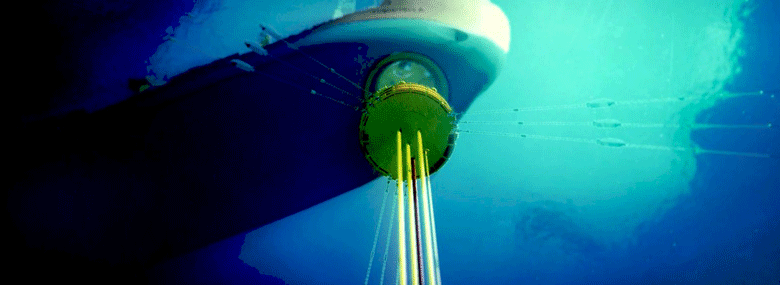

Shell employs 3D-printing technology to make the design and construction of equipment used in oil and gas production faster and more efficient.
Printing technology allows the company to create accurate-scale prototypes in materials such as plastic, which it tests and uses to improve designs and construction processes.
In the offshore environment, teams in North and South America have experimented with 3D printing in situations where they face high installation costs.
Stepping stones
Due to being self-contained, versatile and efficient, floating production, storage and offloading (FPSO) facilities are commonly used by Shell and others throughout the world to produce oil in regions where there is a relative lack of infrastructure.

The Turritella is the first FPSO facility that Shell has deployed in the Gulf of Mexico, but not globally.
Shell also uses them elsewhere, including the Parque das Conchas (BC-10) project off Brazil with co-owners Oil and Natural Gas Corporation and Qatar Petroleum International.
The Turritella, with a deadweight of nearly 160,000 tonnes, is 274 metres long and 48 metres wide.
The vessel has a daily capacity of 60,000 barrels of oil and 1.4 billion cubic feet of natural gas. Up to 800,000 barrels of oil can be stored onboard.
Viewed from above, the FPSO has a huge circular hole in its bow. To moor itself in the field, the Turritella manoeuvers directly above the submerged turret buoy, then pulls the buoy up into the hole, like putting a cork in a bottle.
As many FPSOs are designed to do, the Turritella weathervanes freely around the buoy as winds change. But unlike most other systems, the buoy itself is part of the ship. That is a major safety feature, since it eliminates the possibility of the FPSO or other vessels colliding with the buoy and risers. Both the FPSO and the turret buoy were provided by SBM Offshore.
Testing the waters
The Stones project boasts a series of firsts for Shell, including an in-line connector that provides adjustable mooring tension for the FPSO and its internal turret buoy. Shell engineers began developing the technology in 2010, but since the concept is new to the Gulf of Mexico, the US Bureau of Safety & Environmental Enforcement wanted to see a working model first.
Under normal circumstances, building an accurate, working demonstration model would take months. To avoid delaying the project, Shell employed 3D-printing technology to produce the complex model in just four weeks.
The challenge was to design, fabricate and assemble large blocks of syntactic foam that would nest inside the turret buoy. Syntactic foam is high-strength cellular material made of tiny spheres of glass, ceramic, polymer or metal bound together with polymer. The material is widely used for floatation, but never before on this scale. The buoy is roughly the height of a four-story office building. Manufacturing limitations meant that each piece of foam had to be relatively small. To fit inside the turret, nearly 1,000 blocks in a variety of complex, interlocking shapes were made, and had to be installed in a specific sequence.
 |
The team realised that the construction sequence of putting together hundreds of syntactic foam blocks was complex. They needed to find the right sequence to put the blocks into a very complex geometry.
Usually, project teams have nothing more than paper drawings to try to describe how best to do the installation work. However, in the case of the Stones buoy, the team used a 3D printer and created a model of the structure, and then a model of all 222 components of the foam blocks. That way, the team could plan the project’s construction and ensure the right installation sequence, so that it was done safely.
Having a model like this in the design process helped the team to bridge the gap between design and fabrication. 3D printing provides a great tool to be able to plan, execute and anticipate any problems and come up with solutions before the process even starts.
 This article is extracted from a report produced by MEED and Mashreq titled Disrupting Oil & Gas. Click here to download the report
This article is extracted from a report produced by MEED and Mashreq titled Disrupting Oil & Gas. Click here to download the report
To know more about the MEED Mashreq Partnership, get in touch with us at MEEDMashreqPartnership@meed.com or find more info on www.meedmashreqconstructionhub.com
You might also like...

Acwa Power eyes selective asset sales
24 April 2024

Bahrain mall to install solar carport
24 April 2024

Aramco extends Karan field bid deadline
24 April 2024

Muscat appoints expressway consultant
24 April 2024
A MEED Subscription...
Subscribe or upgrade your current MEED.com package to support your strategic planning with the MENA region’s best source of business information. Proceed to our online shop below to find out more about the features in each package.




